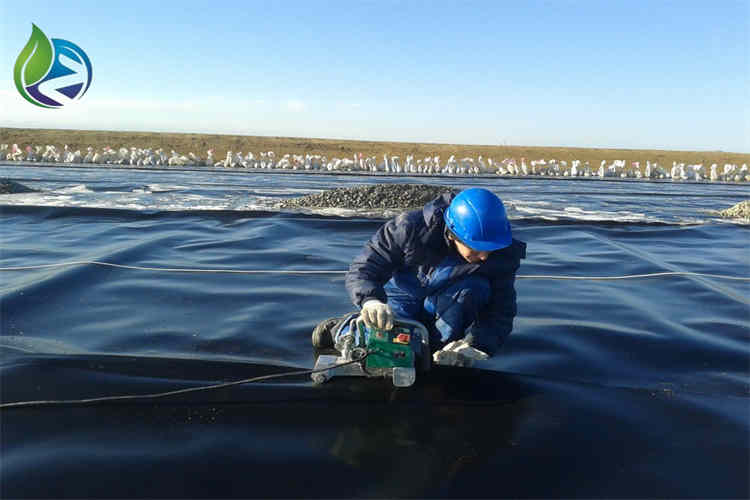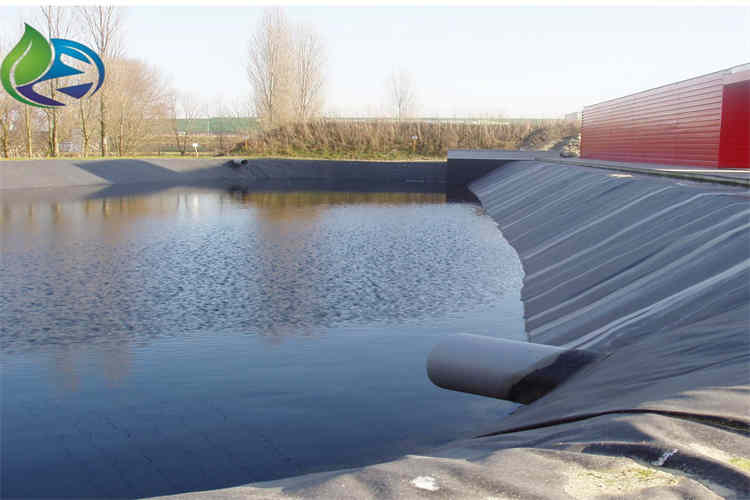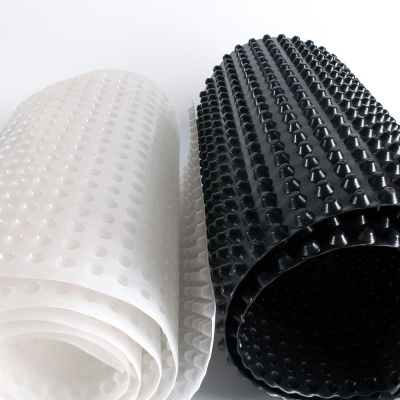Basic Joint Lapping of Impermeable Geomembrane of Fish Pond
Basic Joint Lapping of Impermeable Geomembrane for Fish Pond
When constructing fish ponds, particularly those requiring effective waterproofing and containment, the installation of impermeable geomembrane is a crucial step. This impermeable geomembrane provides an essential barrier to prevent water leakage, ensuring the longevity of the pond and maintaining the aquatic environment. One critical aspect of geomembrane installation is the joint lapping process, which is fundamental to creating a secure, leak-proof seal. Below is a comprehensive guide on how to properly execute joint lapping of impermeable geomembrane for fish ponds.
1. Understanding Geomembrane Joint Lapping
Joint lapping refers to the method of connecting two adjacent sheets of impermeable geomembrane to form a continuous, sealed surface. The main goal of joint lapping is to ensure that the geomembrane sheets are securely bonded together, preventing water from seeping through the seams. Proper joint lapping ensures the structural integrity of the fish pond lining system, crucial for maintaining water levels and protecting the environment.
2. Preparing the Geomembrane Sheets
Before beginning the joint lapping process, it is essential to prepare the impermeable geomembrane sheets appropriately:
Cutting and Layout: Cut the geomembrane sheets to the required size and lay them out in the pond, ensuring that the edges overlap by a sufficient margin. Typically, a 100mm to 200mm overlap is recommended for effective joint bonding.
Surface Cleaning: The surfaces of the geomembrane sheets must be thoroughly cleaned to remove dust, dirt, and any other debris that could hinder the bonding process. A clean surface ensures a strong, durable seal once the sheets are joined.
3. Lapping Techniques for Seam Sealing
There are two main methods used for joint lapping of impermeable geomembrane sheets:
Hot-Wedge Welding:
Hot-wedge welding involves using a specialized welding tool that melts the edges of the geomembrane sheets, allowing them to be pressed together and fused. This method is highly effective in creating strong, durable seams that are resistant to leakage.
During the welding process, the geomembrane sheets are heated using a wedge-shaped tool that passes over the seams, ensuring that both edges melt and bond securely.
Extrusion Welding:
In extrusion welding, a continuous stream of molten polymer (usually made of the same material as the geomembrane) is applied along the seam between the geomembrane sheets. The molten material is pressed into the seam, fusing the two sheets together.
This method is particularly useful when working with thicker geomembrane materials, providing extra strength to the joint and enhancing the waterproofing properties of the bond.
Both methods require precise control of temperature and pressure to ensure that the geomembrane is not damaged during the lapping process.
4. Inspection of the Seams
After the joint lapping process, it is essential to inspect the seams to ensure that they are correctly bonded and leak-proof. There are several tests that can be conducted to check the quality of the seams:
Visual Inspection: Check the seams for any visible gaps, bubbles, or areas where the geomembrane may not have fused correctly.
Air Channel Testing: This involves inflating a small air pocket between the sheets and checking for any air leaks. If air escapes, it indicates that the joint is not properly sealed.
Vacuum Testing: A vacuum test can also be conducted to detect any weak spots or leaks along the seams. This test helps to ensure that the entire seam is airtight.
5. Quality Control and Adherence to Standards
Ensuring that the impermeable geomembrane is installed properly is essential for the long-term performance of the fish pond. During the joint lapping process, all work should be done in accordance with industry standards and guidelines for geomembrane installation. These standards typically include:
Seam Strength: The seams must be able to withstand tensile stress and prevent any separation under pressure or environmental conditions.
Impermeability: The geomembrane must be completely impermeable to water and resist penetration by chemicals or other contaminants that might be present in the pond.
Durability: The joint lapping must ensure that the geomembrane can withstand extreme weather conditions, including UV exposure, high humidity, and fluctuating temperatures.
To guarantee that the work meets these standards, only trained professionals should perform the joint lapping and welding processes. Regular inspections should also be conducted throughout the installation to ensure that all seams are properly sealed and meet the required quality standards.
6. Maintenance of the Lapped Geomembrane
After the geomembrane has been installed and the joints have been properly lapped, it is essential to conduct regular maintenance to preserve the integrity of the fish pond lining system:
Periodic Inspections: Regularly inspect the seams for any signs of wear or damage, especially after storms or high winds.
Repairs: If any issues are identified, such as a breach in the seam or damage from external factors, prompt repairs should be made using compatible welding methods to re-seal the geomembrane.
Conclusion
Proper joint lapping of impermeable geomembrane is essential for ensuring the effective waterproofing and long-term performance of fish ponds. By following the correct techniques and ensuring strict adherence to industry standards, you can create a durable, reliable lining system that will protect the pond from water leakage and environmental damage. Through careful preparation, welding, and inspection, the geomembrane seams will provide a robust, waterproof barrier that ensures the safety and sustainability of the pond environment.
5. When welding the impervious film of the fish pond, an experienced technician shall be arranged for welding and a special welding machine shall be used for welding. Adjust temperature and speed. After years of practice has proved that the thickness of the geomembrane is not less than 0.25 mm, too thin may produce pores, easy to damage during the construction process, reduce the anti-seepage effect. In the construction of geomembrane, special attention should be paid to the laying not too tight, not wrinkled, and the splicing should be firm.
The surface lubrication of the impervious film of the fish pond can be useful in the rainy season to avoid the escape of fish, and its main function is to avoid the direct contact of fish with the soil and avoid water pollution. Fish pond impermeable membrane can not only prevent waste from accumulating in the soil, but also prevent harmful chemicals from entering the pond, which can reduce the risk of disease, useful maintenance and promote the growth of fish. The impermeable membrane of the fish pond can provide a smooth surface to the pond and easily remove the waste in the pond, which is easy to catch, and can also maintain the pond slope from corrosion. The standard of impermeable fish pond film: the standard of anti-aging fish pond film is generally 6 meters wide, and the thickness can be roughly divided into 0.3mm-1.0mm. Generally 0.75mm can be used, of course, the thicker the quality is better, the longer the service life. After using the impervious membrane of the fish pond, there will be no weeds, sludge and other things at the bottom of the pond that affect the speed of fishing, so it can be captured more efficiently. The time of capture will be greatly reduced, and the vitality and freshness of fish and shrimp will be greatly enhanced; The environmental adaptability of bacteria under the maintenance of impermeable membrane will be greatly reduced, and then the healthy growth of fish and shrimp will be eradicated or the possibility of disease transmission will be reduced, and the output value of fish and shrimp feeding will be improved. Because a lot of time is saved, and then the feeding cycle of the fish pond is accelerated, the output value is increased in disguise.
The above is the basic joint and lapping requirements of the fish pond impervious film, hoping to help customers better understand the fish pond impervious film, improve the quality of engineering construction, ensure the efficiency of aquaculture to provide support and help, more fish pond impervious film and other geomaterials products purchase, as well as knowledge details, you can pay more attention to my company website update.







